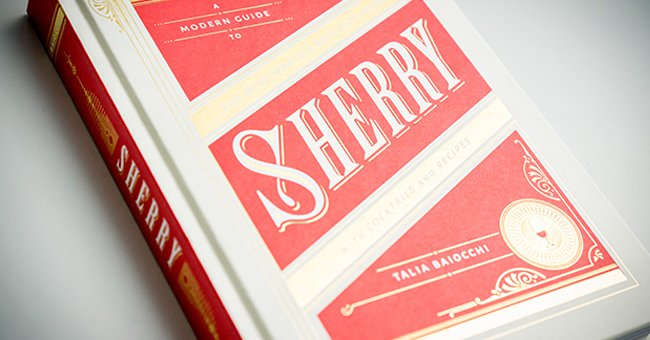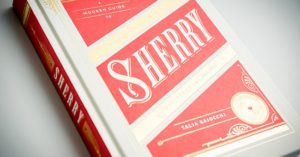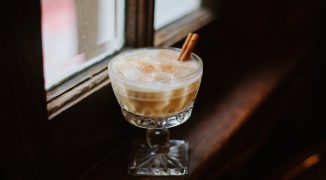If you’re a bartender who’s serious about the what and how behind your drinks, you’re probably somewhat familiar with the cocktail reading canon. Perhaps you have a well-worn copy of “Professor” Jerry Thomas’s “Bar-Tender’s Guide” in your well; maybe “The Savoy Cocktail Book” is your go-to reference. While these timeless classics definitely deserve a spot on your shelf, the past year has brought us a fresh new crop of works exploring modern cocktail culture—and for bartenders intent on honing their craft, some of them should be required reading. Below, a few of our favorite books published in the last year, ranging from mad-scientist chemistry texts to musings on a single spirit. Pull up a chair, pour something to sip, and dive in:
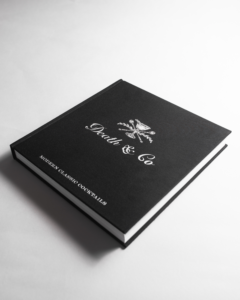 “Death & Co: Modern Classic Cocktails” by David Kaplan, Nick Fauchald, and Alex Day
“Death & Co: Modern Classic Cocktails” by David Kaplan, Nick Fauchald, and Alex Day
Since opening in 2006, Death & Co. has solidified itself not just as one of the most beloved and award-winning bars in the world, but also as an essential part of modern cocktail culture. “Death & Co: Modern Classic Cocktails” encapsulates that contribution in print form, offering up 500 recipes alongside in-depth education on bartending technique, cocktail history, behind-the-bar musings, and more. This handsome book is proof that everything coming out of Death & Co., whether it’s a tequila-tinged take on an Old-Fashioned or a 300-page recipe book, is bound to be great.rn
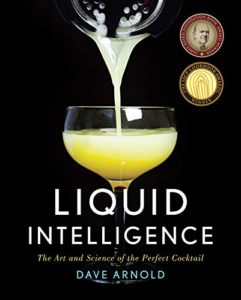 “Liquid Intelligence: The Art and Science of the Perfect Cocktail” by Dave Arnold
“Liquid Intelligence: The Art and Science of the Perfect Cocktail” by Dave Arnold
There are cocktail nerds. And then, there are cocktail chemists. Take Dave Arnold, whose bar isn’t complete without centrifuges, rotary evaporators, and 1,500-degree pokers. (Oh, and lots of liquid nitrogen.) At New York’s Booker & Dax, Arnold and his team use all manner of gizmos, gadgets, and scientific geekery to craft incredibly inventive drinks. “Liquid Intelligence” is his brainy analysis of the many, many components of a drink, right down to the molecular level. Arnold offers his formulas for everything from creating crystal-clear ice cubes to spiking your G&Ts with succinic acid. In these pages, Arnold covers the full spectrum: practical, science-based guidance on drink-making basics, zany methods pulled straight from a chemistry textbook, and endless amounts of inspiration.
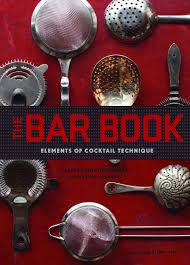 “The Bar Book: Elements of Cocktail Technique” by Jeffrey Morgenthaler
“The Bar Book: Elements of Cocktail Technique” by Jeffrey Morgenthaler
It’s easy to get carried away with obscure ingredients, sought-after spirits, and complex recipes. But when it comes to honing your craft behind the bar, none of the above can truly replace excellent technique and a practiced hand. In “The Bar Book,” Jeffrey Morganthaler — one of the most prolific bartenders-turned-writers of our day — zooms in on the most fundamental, but often foregone, aspects of cocktail-making. From zesting to shaking to using the right type of ice, Morganthaler breaks down (in intensive detail) the everyday techniques that are so easy to take for granted, but so crucial to the architecture of a perfect drink.
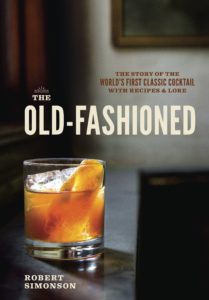 “The Old-Fashioned” by Robert Simonson
“The Old-Fashioned” by Robert Simonson
Who knew you could get nearly 200 pages out of a drink with only four ingredients? Luckily, the noble beverage in question — the classic Old-Fashioned — has a rich history ripe for storytelling, and Robert Simonson makes an excellent guide for distilling its saga and legacy into print form (complete with recipes, of course).
It’s no secret that sherry is enjoying a moment in the sun, thanks to a wave of intrepid drinkers curious about the centuries-old wine style’s many nuances. With such a range of styles and flavor profiles, plus a fascinating history and a wholly unique production process, sherry is long overdue for someone to tell its story. Talia Baiocchi, editor-in-chief of PUNCH, does it justice: diving into the history of the Spanish fortified wine, taking readers on an educational journey through Andalusia’s Sherry Triangle, and rounding it out with cocktail recipes both modern and classic.
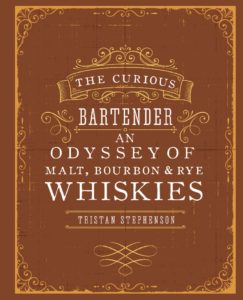 “The Curious Bartender: An Odyssey of Malt Bourbon & Rye Whiskies” by Tristan Stephenson
“The Curious Bartender: An Odyssey of Malt Bourbon & Rye Whiskies” by Tristan Stephenson
When it comes to delving into the fascinating and complex world of whiskies, “odyssey” is pretty much the perfect way to describe it. And no better person to guide us through this adventure than Tristan Stephenson, a bartender whose curiosity has lead to some of the most innovative modernist cocktail approaches in London (and beyond). In his second book, Stephenson details the beverage’s complex history, delineates the differences between styles, and highlights some of the most interesting distilleries around the world, from Sweden to Tasmania and everywhere in between. We highly suggest pairing this engrossing read with a glass of equally engrossing whiskey.
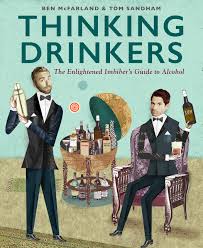 “Thinking Drinkers: The Enlightened Imbiber’s Guide to Alcohol” by Ben McFarland and Tom Sandham
“Thinking Drinkers: The Enlightened Imbiber’s Guide to Alcohol” by Ben McFarland and Tom Sandham
Ben McFarland and Tom Sandham are two professional writers with very deep thoughts about what goes into their glass. The dynamic duo, known as the Thinking Drinkers, take an academic approach to imbibing, and the result is a delightfully geeky deep-dive into the world of all things drinkable (complete with a slew of colorful historic characters you’ll encounter along the way). This one’s for the Wikipedia nerds, history majors, and armchair philosophers alike—as long as you enjoy your cerebral musings with a side of spirits.
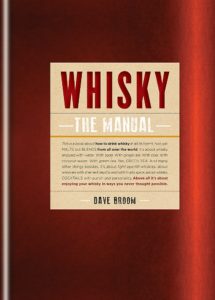 “Whisky: The Manual” by Dave Broom
“Whisky: The Manual” by Dave Broom
How can any one spirit be so beloved in so many places, but so divisive at the same time? It’s a drink adored around the world, but pit a rye devotee and a bourbon fan against one another, and a little mud is bound to be slung. (We can’t even agree on a universal spelling of the stuff.) With such a complex and complicated spirit, it’s almost like one needs a user manual to even understand the stuff… which just so happens to be exactly what Dave Broom has given us. Broom, one of the world’s foremost whiskey experts (he’s now helming his own website, ScotchWhisky.com), gives us the what, how, and why of drinking whiskey, dispelling a few common myths along the way. Namely: blends aren’t all bad, and neat isn’t the only way to drink the stuff. It might sound like heresy, but try the Smokey Cokey and see exactly what we mean.


